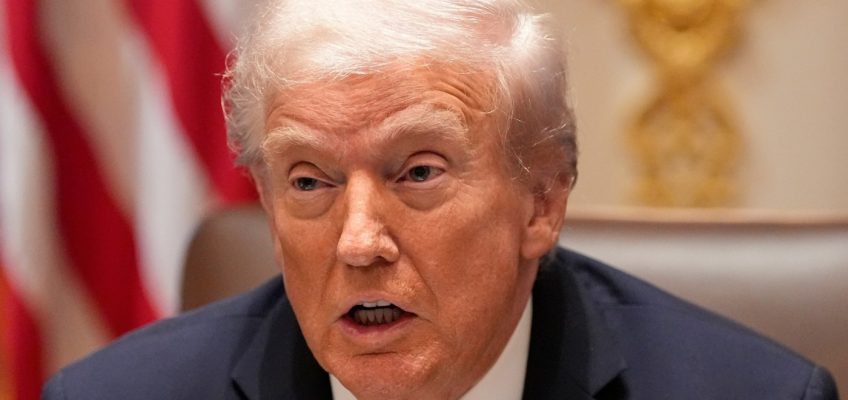For many college basketball experts, selecting the greatest players of the women’s poll era sounds easy — until they try it.
Of course, USC’s Cheryl Miller and Diana Taurasi of UConn are relatively easy choices. But narrowing the list from there gets tricky, inevitably leaving out talented players, including those who sharpened their skills during later professional careers.
FILE – Iowa guard Caitlin Clark makes a heart gesture after the team’s NCAA college basketball game against Michigan, Thursday, Feb. 15, 2024, in Iowa City, Iowa. Clark broke the NCAA women’s career scoring record. (AP Photo/Matthew Putney, File)
In honor of the 50th anniversary of the women’s basketball poll, The Associated Press assembled a list of the greatest players since the first poll in 1976. And in the spirit of the Top 25 rankings, the choices are certain to spark a debate and prompt plenty of handwringing among those who were in a position to vote.
“Nearly impossible,” Rebecca Lobo, a former UConn standout and NCAA champion, said of the assignment. “As I’m looking down the list, I’m like no-brainer, no-brainer, no-brainer. But then I’m like wait, there’s too many no-brainers and not enough slots.”
Lobo was one of 13 members of a panel of former players and AP sportswriters who voted on the greatest players. They were instructed to consider only the athletes’ college careers. Other factors, however, were up to their discretion, including championship pedigree, record-breaking statistics or simply their ability to will their teams to victory.
“It was extraordinarily difficult, especially, to try to hone in on a players’ college career and eliminate their pro career from your brain,” Lobo added. “There are going to be players who are Hall of Fame-caliber players who aren’t on the list.”
Joining Miller in the frontcourt on the first team are Breanna Stewart and Candace Parker. Caitlin Clark joins Taurasi as the guards.
Taurasi helped UConn win three national championships, including carrying the Huskies to the last two basically on her own during her junior and senior season.
“What an accomplishment and what an honor,” Taurasi said. “To think about the history of the game and where it’s gone. You always have to look at the past to go into the future. There’s so many great women who paved the way.”
Clark led Iowa to back-to-back NCAA championship game appearances while setting the career scoring record for any Division I women’s or men’s basketball player. Her play on the court, including her logo 3-point shots, helped lift women’s basketball to unprecedented levels of attention and energy during her last two seasons.
“Being named an AP All-American is one of the most storied honors in college sports,” Clark said. “It means a lot to be named to this all-time list alongside players I looked up to. It’s fun to think about what it would have been like if we all played together.”
The frontcourt of Miller, Stewart and Parker dominated the game during their eras.
Stewart won four NCAA championships at UConn and earned Most Outstanding Player of the Final Four all four years. Parker led Tennessee to back-to-back titles in 2007-08. Miller, one of the original NCAA greats, starred for USC and led the Trojans to consecutive championships in 1983-84.
“I grew up watching Cheryl Miller play,” Parker said. “She’d be No. 1. My dad was like ‘This is who we wanted you to be.’ I’m honored to be on this list with her.”
The second team’s backcourt is UConn’s Sue Bird and Virginia’s Dawn Staley. The former Cavaliers guard and current South Carolina coach is the only women’s player to win the Most Outstanding Player of the Final Four on a losing team when her Cavaliers fell to Tennessee. Bird helped UConn win championships in 2000 and 2002.
The Lady Vols’ Chamique Holdsclaw, UConn’s Maya Moore and Lusia Harris of Delta State are on the second team frontcourt. Holdsclaw was a three-time NCAA champion and twice earned the tournament’s MOP honor. Moore was part of the Huskies’ dynasty that won a then-record 89 consecutive games. She helped the Huskies to consecutive titles in 2009-10.
Harris led Delta State to three AIAW titles in the mid-1970s and was the tournament’s MVP each year.
“I’d watch these two teams play and I’m not sure who would win,” UConn coach Geno Auriemma said of the first and second teams selected by the panel.
Auriemma has four former players on the first two teams, but would enjoy looking to the bench at a group of reserves that includes:
UCLA’s Ann Meyers Drysdale, Kansas’ Lynette Woodard and Texas Tech’s Sheryl Swoopes in the backcourt. For the frontcourt, there is USC’s Lisa Leslie, Baylor’s Brittney Griner and South Carolina’s A’ja Wilson.
“I am always asked if players today could play back in the ‘70s or ’80s or vice versa. When you’re great in one generation, you’re going to be great in any generation,” said Meyers Drysdale, who also was a member of the voting panel. “I don’t think there’s any name that is wrong or there’s any name that is right. There’s so many great players that are going to be left off.”
Sister Jean, longtime Loyola Chicago chaplain and March Madness icon, retires at 106
Gophers men’s basketball looks to add to strong recruiting class
Here’s a look at the University of St. Thomas’ Lee and Penny Anderson Arena as opening nears
Ex-Wisconsin players say in lawsuit that former coach Marisa Moseley psychologically abused them




